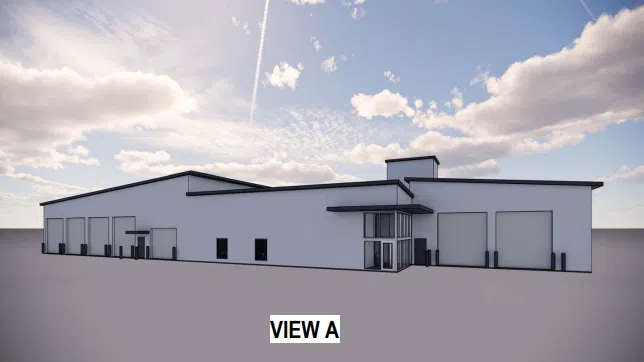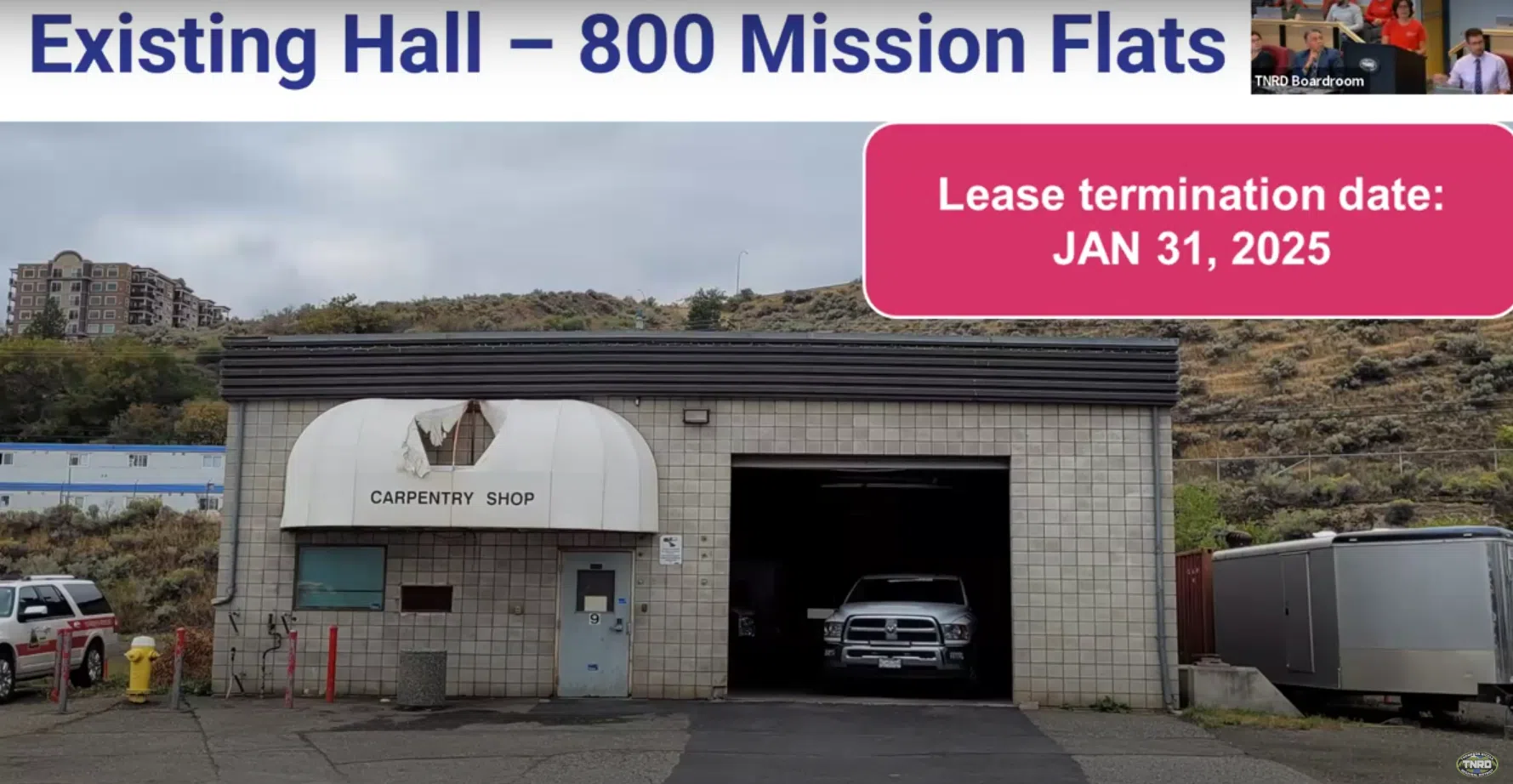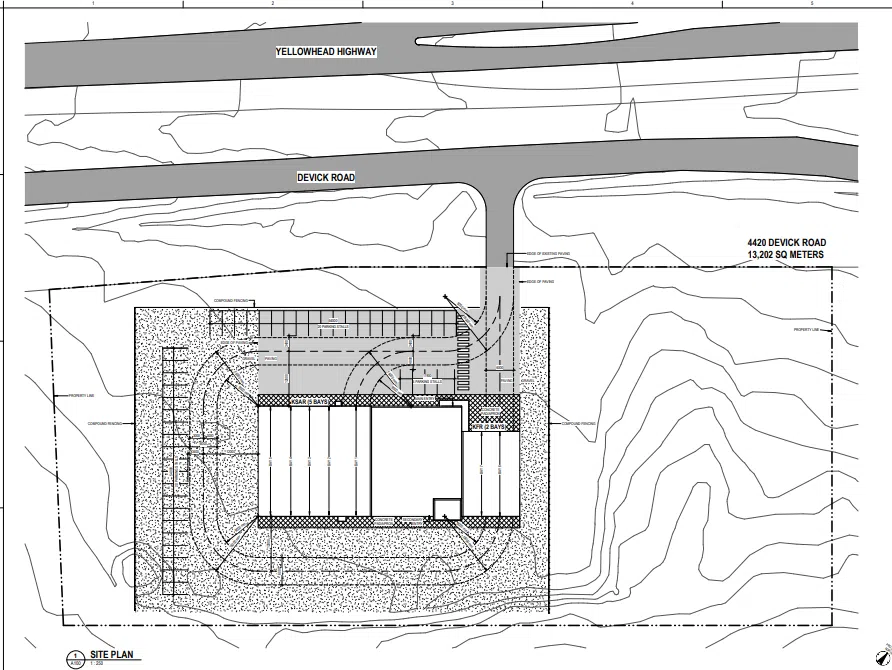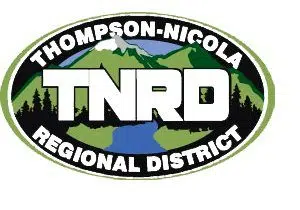
Kamloops Search and Rescue (KSAR) is moving closer to securing a long-awaited permanent home, following unanimous support from the Thompson-Nicola Regional District (TNRD) Board for a proposed joint-use facility in Rayleigh that would also house Kamloops Fire Rescue (KFR).
The Board voted this week to support a shared funding, ownership, and operation model with the City of Kamloops for a 15,700-square-foot operations centre located at 4420 Devick Road. The building would replace KSAR’s aging and overcrowded facility on Mission Flats Road and provide both organizations with modern, fit-for-purpose space to respond to emergencies across the region.

Current location
“We are literally bursting at the seams,” said KSAR Vice President Paula Davies, during a detailed presentation to the Board. “We have no classroom, no training space, and our vehicles no longer fit in our current hall. And we’re being allowed to stay only temporarily—our lease has already expired.”
Project Breakdown and Costing
The proposed facility, according to a Class D cost estimate prepared by LTA Consultants Inc., would include:
-
Five equipment bays for KSAR and two bays for KFR
-
A training room, kitchen, locker rooms, mezzanine storage, and a three-storey hose/training tower
-
A basic industrial-style design with code-minimum electrical and mechanical systems
The current estimated construction cost is $9.45 million, not including GST or soft costs. The proposed capital funding model includes:
-
$2.4 million from the City of Kamloops (covering the 25% of the space used by KFR)
-
$5.7 million from the TNRD (for the 75% KSAR portion)
-
$1.4 million from KSAR fundraising efforts, based on a third-party feasibility study
KSAR has also set aside $500,000 from its own reserves and plans to use this for furnishing or as a buffer if fundraising falls short. However, Davies cautioned that the local fundraising environment is competitive, with major campaigns underway by TRU, the hospital foundation, and others.
A Regional Asset
Directors across the region voiced strong support for the facility, emphasizing KSAR’s role beyond Kamloops. “They’ve been in the North Thompson multiple times for wildfires, flood control, and search and rescue,” said Director Hayward. “They support other SAR teams in our region constantly. This facility would benefit the whole region.”
“This isn’t just a Kamloops issue,” added Director O’Reilly, noting that the land for the facility was donated by the Devick family specifically for fire and rescue use. “This is the right use for the land and a good partnership that strengthens regional safety.”
In 2024, KSAR responded to a record 75 callouts. Roughly 74% of their tasks originate from RCMP and 24% from BC Ambulance, including wilderness rescues, dementia-related urban searches, swift water and ice rescue, and disaster response. “We are often first in—and the only ones going in,” Davies said. “We are ready to deploy 24/7, 365 days a year, entirely free of charge.”

New site plan – 4420 Devick Rd.
Next Steps and Timeline
The Board’s vote included three key actions:
-
Support the joint model with the City of Kamloops
-
Request that KSAR and the City confirm their commitment and capital contributions
-
Instruct TNRD staff to prepare a next steps report, including financial modeling, public assent planning, and timelines
If approved, the project would be delivered through a strata ownership model, similar to the one used for the TNRD’s Civic Building. The City would fund and manage the fire service portion, while the TNRD would borrow to cover the regional SAR component.
A Community Investment
Davies concluded her presentation with a reminder of KSAR’s deep roots and role in the community:
“We’ve been doing this for over 50 years,” she said. “Tourism in Kamloops is rooted in community and fueled by adventure. We enhance the safety of residents and visitors alike—and we don’t want to jeopardize that.”
“We go where others can’t—or won’t—and we do it to serve this region.”
With growing public safety challenges—from wildfires to backcountry rescues to flooding—the proposed facility is being positioned not just as a building, but a critical investment in the region’s emergency readiness.















